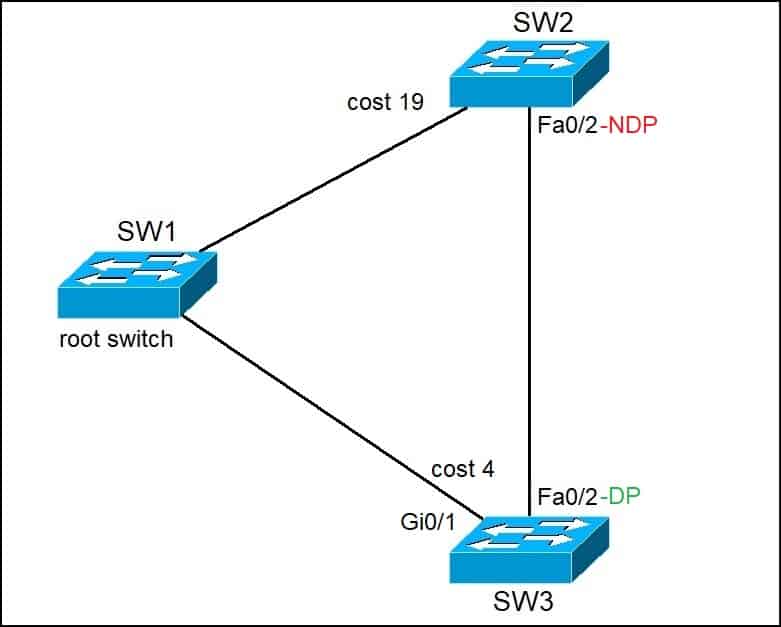We’ve already learned that with Spanning Tree Protocol (STP) on the shared Ethernet segments, the switch with the best path to reach the root switch is placed in a forwarding state. That switch is called the designated switch and its ports are known as the designated ports. In order to avoid loops, the non-designated port on the other end of the link is placed in a blocking state.
The designated switch is determined based on the following criteria:
- The switch with the lowest root path cost becomes the designated switch on that link.
- In case of a root path cost tie, the switch with the lowest Bridge ID (BID) becomes the designated switch.
Consider the following example:
SW1 has the lowest BID and has been selected as the root bridge or switch. SW2 and SW3 have then determined their own root port based on the lowest port cost. On the shared network segment between SW2 and SW3, a spanning tree designated port needs to be selected.
Since SW3 has a lower cost to reach the root switch (4<19), its Fa0/2 port will be the spanning tree designated port for the segment. The Fa0/2 switch port on SW2 will be placed in a blocking state.
NOTE
If the link between SW1 and SW3 fails, STP will converge and the Fa0/2 port on SW2 will be placed in the forwarding state to forward traffic.
Download our Free CCNA Study Guide PDF for complete notes on all the CCNA 200-301 exam topics in one book.
We recommend the Cisco CCNA Gold Bootcamp as your main CCNA training course. It’s the highest rated Cisco course online with an average rating of 4.8 from over 30,000 public reviews and is the gold standard in CCNA training:

